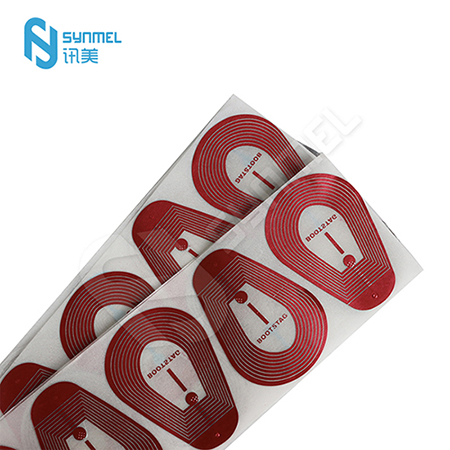- English
- Español
- Português
- русский
- Français
- 日本語
- Deutsch
- tiếng Việt
- Italiano
- Nederlands
- ภาษาไทย
- Polski
- 한국어
- Svenska
- magyar
- Malay
- বাংলা ভাষার
- Dansk
- Suomi
- हिन्दी
- Pilipino
- Türkçe
- Gaeilge
- العربية
- Indonesia
- Norsk
- تمل
- český
- ελληνικά
- український
- Javanese
- فارسی
- தமிழ்
- తెలుగు
- नेपाली
- Burmese
- български
- ລາວ
- Latine
- Қазақша
- Euskal
- Azərbaycan
- Slovenský jazyk
- Македонски
- Lietuvos
- Eesti Keel
- Română
- Slovenski
- मराठी
- Srpski језик
What should be paid attention to during the installation and use of RF labels
2025-03-20
The following points should be noted during the installation and use of RF labels to ensure their normal operation and extend their service life:
1. Installation location selection
Avoid metal surfaces: RF labels should avoid being directly attached to metal surfaces, because metal will interfere with the propagation of RF signals, causing the labels to not work properly. Metal surfaces will reflect or absorb RF signals, thus affecting the reading effect.
Choose the appropriate height and position: Ensure that the label is installed within the effective range of the reading device as needed, and avoid obstructions or obstacles that affect signal transmission.
2. Correct attachment method
Surface cleaning: Before attaching the label, ensure that the installation surface is clean, dry, and free of oil, dust or other impurities to ensure that the label is firmly attached.
Ensure uniform attachment: The label should be attached to the target object flatly to avoid bubbles or wrinkles, which may affect the performance of the label.
Choose the right adhesive: Use an adhesive that matches the label material and the use environment to ensure that the label can remain stable during long-term use.
3. Installation angle
Label orientation problem: The direction of the label should be aligned with the direction of the reader's receiving signal. If the directions of the label and reader do not match, the signal reception effect will decrease.
Make sure the label faces outward: If there is an antenna or logo on the label, make sure these parts face outward to avoid obstruction.
4. Avoid extreme environments
High and low temperatures: RF labels may be damaged or their performance may degrade in extreme temperatures. You should choose labels that are suitable for the temperature range and meet the requirements of use, and avoid exposure to too high or too low temperature environments.
Humid environment: High humidity may affect the electronic components of the label, especially when used in a humid environment for a long time, the label may be corroded. For humid environments, it is recommended to use waterproof and corrosion-resistant labels.
5. Prevent labels from collision and wear
Avoid physical damage: RF labels may be damaged by friction, collision or severe squeezing. Avoid excessive physical impact on the surface of the label during installation.
Durability requirements: For application scenarios that may be subject to collision or wear, you should choose durable labels, such as wear-resistant and scratch-resistant labels.
6. Avoid interference sources
Avoid electromagnetic interference: RF labels may be interfered with near strong electromagnetic fields or high-frequency devices. Therefore, when installing, keep away from high-power electrical appliances or high-frequency emission sources, such as transformers, large motors and other equipment.
Avoid proximity to signal shielding materials: Some materials may shield or reflect RFID signals, so avoid installing labels near these materials.
7. Regular inspection and maintenance
Regularly check the function of the label: Ensure that the label can always be read and written normally during use, and regularly check whether the label is damaged or has performance degradation.
Maintenance and cleaning: During long-term use, regularly clean the label and its surrounding environment to avoid dust and dirt affecting the performance of the label.
8. Matching labels with readers
Ensure frequency matching: Select the appropriate RF frequency and label type according to the use environment, and ensure that the frequency between the label and the reader matches to ensure the reading and writing effect.
Matching label capacity with application requirements: Select labels with appropriate storage capacity according to actual needs to avoid the inability to store necessary information due to insufficient capacity.
9. Environmental adaptability
Choose the appropriate label type: For applications in different environments, select the corresponding label type to ensure that the label can work reliably for a long time under specific environmental conditions.
The above precautions can effectively ensure the stability and reliability of the RF label during installation and use, and maximize the service life and performance of the label.




